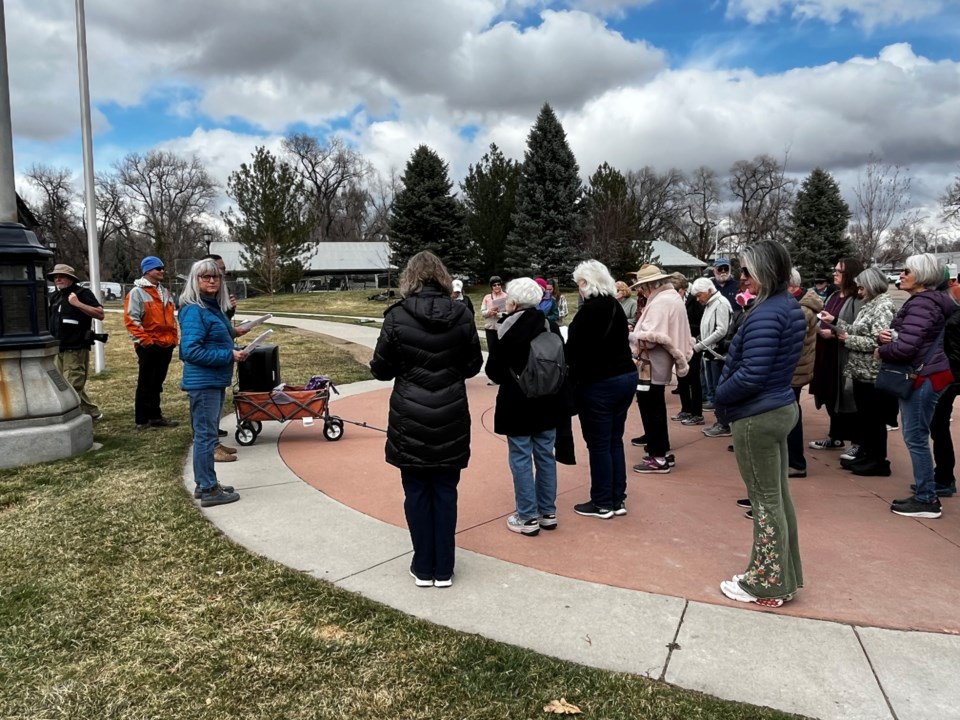The Light of Christ Ecumenical Catholic Community led a silent walk to six Longmont sites in downtown on Friday. The procession visits former sites where the Ku Klux Klan gathered to promote hate in Longmont. The walk included a summary of the history of each site while sharing faith teachings to promote kindness and acceptance.
“This is not your typical re-enactment of the 14 Stations of the Cross. We are here today to walk through the downtown streets of Longmont to uncover the history of past racism and discrimination in specific locations where the Klan met and contributed to community unrest and exclusion,” Helen Majzler said as a group gathered in front of the Memorial Building in Longmont.
The Memorial Building now stands where an auditorium used to sit. The KKK held lectures and public performances in the auditorium. The Klan invited several famous speakers to continue their messages of hate, according to the church. The Klan also promised to restore law and order while blaming others for civil unrest.
The procession continued to where the flags stand in Roosevelt Park. The area was a common meeting point for Klan members before parades down Main Street. In June 1925, the first Klan parade was held in Longmont. It drew in over 2,000 Klan members from the surrounding area.
The next stop was Sixth Avenue and Main Street. The church group shared the history of business owners who were “run out of town” by the Klan because of their ethnicity, race or religion.
Longmont Civic Center marked the fourth stop on the walk. In 1924, Klan members were voted onto the Longmont City Council. These members were in the minority on the council until 1925 when more members were voted in. The Klan members fired many city employees and replaced them with other Klan members.
The fifth stop was the Kuner-Emson Packing Plant located at Third Avenue and Main Street. The plant was the site where vegetables from local farms were processed and canned for grocery stores across the country. The plant caught fire in 1903 and had to be rebuilt. While not in operation it served as another meeting place for the Klan. What the meetings entail is unknown as no minutes were recorded and membership lists were destroyed.
The procession ended at Third Avenue and Martin Street, an open field in 1920. An estimated six Latino men, armed with guns, faced off against a “gang” of Klan members. The Latino men told the Klan members that they were prepared to “shoot any white man who inflicted their Klan bullying on their people,” according to the church. The Klan members were said to have retreated. The event, led by the Latino men, was seen as an act of resistance and bravery.
The church related the suffering of those bullied by the Klan to Jesus’ procession to the cross. The message they wanted people to understand was that it is important to confront evil and show compassion for your fellow humans.



